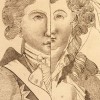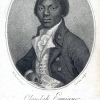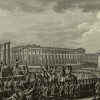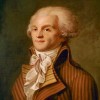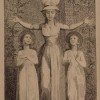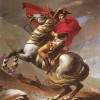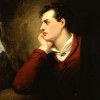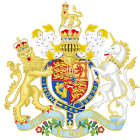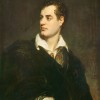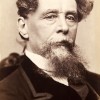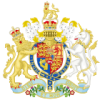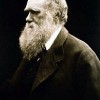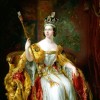British Literature II Timeline
Created by Amy Gates on Sat, 06/06/2020 - 02:41
Part of Group:
This timeline highlights events that correspond to the timeframe of ENG 272: British Literature II.
Timeline
Chronological table
| Date | Event | Created by | Associated Places | |
|---|---|---|---|---|
| Dec 1779 |
Command performance of Florizel and Perdita
Articles
|
David Rettenmaier | ||
| 7 Sep 1785 |
Sunday School Society formedOn 7 September 1785, the Sunday School Society was formed to coordinate free religious education among the more destitute poor on nondenominational (Christian) grounds. Until the 1870 Education Act, these schools provided basic instruction in reading, and in some cases writing and arithmetic. Related ArticlesFlorence S. Boos, “The Education Act of 1870: Before and After” |
David Rettenmaier | ||
| Jan 1789 |
Interesting Narrative of the Life of Olaudah Equiano
Articles |
David Rettenmaier | ||
| 5 May 1789 to 10 Nov 1799 |
French Revolution
On 5 May 1789, the Estates-General, representing the nobility, the clergy, and the common people, held a meeting at the request of the King to address France’s financial difficulties. At this meeting, the Third Estate (the commoners) protested the merely symbolic double representation that they had been granted by the King. This protest resulted in a fracture among the three estates and precipitated the French Revolution. On 17 June, members of the Third Estate designated themselves the National Assembly and claimed to represent the people of the nation, thus preparing the way for the foundation of the republic. Several pivotal events followed in quick succession: the storming of the Bastille (14 July), the approval of the Declaration of the Rights of Man and of the Citizen (26 August), and the march on Versailles that led to the enforced relocation of the royal family to Paris (5-6 October). These revolutionary acts fired the imagination of many regarding the political future of France, and, indeed, all of Europe. The republican period of the revolution continued in various phases until 9-10 November 1799 when Napoleon Bonaparte supplanted the government. ArticlesDiane Piccitto, "On 1793 and the Aftermath of the French Revolution" |
David Rettenmaier | ||
| 1 Jan 1792 |
Vindication of the Rights of Woman
ArticlesAnne K. Mellor, "On the Publication of A Vindication of the Rights of Woman" Related Articles |
David Rettenmaier | ||
| 21 Jan 1793 |
Execution of King Louis XVI
1793 was a key juncture in the revolution, beginning with this execution on 21 January. The increasing violence prompted Britain to cut its ties to France, leading to declarations of war by the two countries. Violence peaked during the Reign of Terror (5 September 1793 – 27 July 1794), which resulted in the execution of the Queen (16 October) as well as of many suspects of treason and members of the Girondins, the more moderate faction that the radical Jacobins brought down on 2 June 1793 ArticlesDiane Piccitto, "On 1793 and the Aftermath of the French Revolution" |
David Rettenmaier | ||
| 5 Sep 1793 to 27 Jul 1794 |
Reign of Terror
On 5 September 1793, the National Convention, France’s ruling body from 1793 to 1795, officially put into effect terror measures in order to subdue opposition to and punish insufficient support for the revolution and the new regime. From the autumn of 1793 until the summer of 1794, thousands of people across the country were imprisoned and executed (including the Queen) under the ruthless leadership of Maximilien Robespierre. The guillotine, particularly the one in Paris’s Place de la Révolution, served as the bloody emblem of the fear tactics that began to manifest themselves first in the formation of the Committee of Public Safety (6 April 1793) and subsequently in the implementation of the Law of Suspects (17 September 1793). The Terror ended on 27 July 1794 with the overthrow of Robespierre, who was guillotined the next day. ArticlesDiane Piccitto, "On 1793 and the Aftermath of the French Revolution" |
David Rettenmaier | ||
| 10 Sep 1797 |
Death of Wollstonecraft
ArticlesAnne K. Mellor, "On the Publication of A Vindication of the Rights of Woman" |
David Rettenmaier | ||
| Jan 1798 |
Memoirs of the Author of a VindicationOn January 1798, publication of William Godwin’s Memoirs of the Author of A Vindication of the Rights of Woman. The publication of this first biography of Wollstonecraft causes a scandal and Godwin publishes a second “corrected” edition of the Memoirs in the summer of the same year. ArticlesRelated ArticlesAnne K. Mellor, "On the Publication of A Vindication of the Rights of Woman" |
David Rettenmaier | ||
| 9 Nov 1799 to 18 Jun 1815 |
Napoleonic Wars
Historians do not agree on the exact beginning or end of the wars. November 9, 1799 is an early candidate since that is when Napoleon seized power in France. Hoping to ease the difficulty, historians date by isolated wars. They disarticulate the Napoleonic Wars in a linear series:
The successive numerical coordinates for the Coalitions offer regularity, but that regularity is undercut by the shifting make-up of that Coalition (sometimes Prussia was in, sometimes not; sometimes Russia, sometimes not) and by the discontinuity and ambiguity of the dates. Articles |
David Rettenmaier | ||
| 26 May 1805 |
Napoleon made king of Italy
In a flamboyant and highly theatrical gesture, Napoleon Bonaparte signifies his political and military dominance over the Italian peninsula with a ceremony in Milan Cathedral, where he crowned himself King of Italy with the ancient, iconic iron crown of Lombardy. This crowning of Napoleon as King is a result of the French conquest of Italy. His full title was "Emperor of the French and King of Italy." ArticlesAlison Chapman, "On Il Risorgimento" Related Articles |
David Rettenmaier | ||
| Dec 1811 |
Ratcliffe Highway MurdersIn December 1811, the Ratcliffe Highway Murders occurred and John Williams, the suspected murderer, was executed. Related ArticlesHeidi Kaufman, “1800-1900: Inside and Outside the Nineteenth-Century East End” |
David Rettenmaier | ||
| Jun 1812 |
Byron witnesses a waltz
ArticlesCheryl A. Wilson, “The Arrival of the Waltz in England, 1812″ |
David Rettenmaier | ||
| 2 Mar 1815 |
Corn Law Act
The Corn Law Act of 1815 prohibited the importation of grain when the prices in the domestic market were high. The Act was repealed on 25 June 1846. Articles |
David Rettenmaier | ||
| 1 Jul 1816 |
Byron, "Darkness"In July 1816, Lord Byron writes his poem, “Darkness,” a vision of chaotic disorder and universal extinction consequent upon the disappearance of the sun. Image: Thomas Philipps, Portrait of Lord Byron (1824). This image is in the public domain in the United States because its copyright has expired. Articles |
David Rettenmaier | ||
| 15 Oct 1822 to 30 Jul 1823 |
The Liberal
Articles |
David Rettenmaier | ||
| 24 Dec 1822 |
Arnold born
ArticlesPeter Melville Logan, “On Culture: Matthew Arnold’s Culture and Anarchy, 1869″ |
David Rettenmaier | ||
| 19 Apr 1824 |
Death of Lord Byron
Related ArticlesAngela Esterhammer, “1824: Improvisation, Speculation, and Identity-Construction” |
David Rettenmaier | ||
| 16 Jun 1824 |
Society for Protection of Animals foundedOn 16 June 1824, founding of the Society for the Protection of Animals (SPCA) in London. The Society became the Royal Society in 1840, when it was granted a royal charter by Queen Victoria, herself strongly opposed to vivisection. ArticlesRelated ArticlesSusan Hamilton (U Alberta), “On the Cruelty to Animals Act, 15 August 1876″ Philip Howell, “June 1859/December 1860: The Dog Show and the Dogs’ Home” Mario Ortiz-Robles, “Animal Acts: 1822, 1835, 1849, 1850, 1854, 1876, 1900″ |
David Rettenmaier | ||
| 1 Jul 1824 to 16 Jul 1824 |
Byron's funeral rites
Related ArticlesAngela Esterhammer, “1824: Improvisation, Speculation, and Identity-Construction” |
David Rettenmaier | ||
| Feb 1827 |
"On Murder Considered as one of the Fine Arts"In February 1827, Thomas De Quincey published "On Murder Considered as one of the Fine Arts" in Blackwood's Magazine. This essay, which he revised several times, focused on the Ratcliffe Highway murders of 1811. Related ArticlesHeidi Kaufman, “1800-1900: Inside and Outside the Nineteenth-Century East End” |
David Rettenmaier | ||
| Oct 1831 to Oct 1836 |
Darwin's voyage on the Beagle
ArticlesNancy Armstrong, “On Charles Darwin’s The Descent of Man, 24 February 1871″ Ian Duncan, “On Charles Darwin and the Voyage of the Beagle” Anna Henchman, “Charles Darwin’s Final Book on Earthworms, 1881” Cannon Schmitt, “On the Publication of Charles Darwin’s On the Origin of Species, 1859″ Related ArticlesDaniel Bivona, “On W. K. Clifford and ‘The Ethics of Belief,’ 11 April 1876″ |
David Rettenmaier | ||
| 28 May 1836 |
Elizabeth Barrett Browning dinner with WordsworthOn 28 May 1836, Elizabeth Barrett Browning met William Wordsworth at a literary dinner in London; EBB's cousin, John Kenyon, was the host and the event most likely occurred at Kenyon's main residence at the time: 39 Devonshire Place, London, which is right around the corner from EBB's residence at the time: 50 Wimpole Street. See the associated map. |
Dino Franco Felluga | ||
| Feb 1837 to Apr 1839 |
Oliver Twist
Related ArticlesHeidi Kaufman, “1800-1900: Inside and Outside the Nineteenth-Century East End” |
David Rettenmaier | ||
| 12 Nov 1839 |
Owen announces extinct bird
Articles |
David Rettenmaier | ||
| circa. 1842 |
Haydon portrait of Wordsworth completedIn 1842 (exact date not known), Benjamin Robert Haydon completed his portrait of William Wordsworth, Wordsworth on Helvellyn. Wordsworth is 72 years of age in the portrait. The original, an oil on canvas, is 124 × 99 cm (48.8 × 39 in) and is owned by the National Portrait Gallery. This work is in the public domain in its country of origin and other countries and areas where the copyright term is the author's life plus 100 years or less. |
Dino Franco Felluga | ||
| 1 Jan 1843 |
Owen discovers Dinornis Novae Zealandiae
Articles |
David Rettenmaier | ||
| 1 Jan 1847 |
"freak of nature"According to the Oxford English Dictionary, 1847 is the year that "freak of nature" enters common parlance. Exact date of this event is unknown; if you have information about the correct date, please email [email protected] with this information. ArticlesNadja Durbach, "On the Emergence of the Freak Show in Britain" |
David Rettenmaier | ||
| 4 Mar 1848 |
Illustrated London News's "The French Revolution"
ArticlesJo Briggs, “1848 and 1851: A Reconsideration of the Historical Narrative” |
David Rettenmaier | ||
| 10 Apr 1848 |
Chartist Rally, Kennington
Led by Feargus O’Connor, an estimated 25,000 Chartists meet on Kennington Common planning to march to Westminster to deliver a monster petition in favor of the six points of the People’s Charter. Police block bridges over the Thames containing the marchers south of the river, and the demonstration is broken up with some arrests and violence. However, the large scale revolt widely predicted and feared fails to materialize. ArticlesJo Briggs, “1848 and 1851: A Reconsideration of the Historical Narrative” |
David Rettenmaier | ||
| Jan 1851 |
London Labour and the London Poor
ArticlesHeidi Kaufman, “1800-1900: Inside and Outside the Nineteenth-Century East End” |
David Rettenmaier | ||
| 9 Aug 1870 |
1870 Married Women's Property Act
This Act established limited protections for some separate property for married women, including the right to retain up to £200 of any earning or inheritance. Before this all of a woman's property owned before her marriage, as well as all acquired after the marriage, automatically became her husband's alone. Only women whose families negotiated different terms in a marriage contract were able to retain control of some portion of their property. ArticlesRachel Ablow, "On the Married Woman's Property Act, 1870" Related ArticlesKelly Hager, “Chipping Away at Coverture: The Matrimonial Causes Act of 1857″ Jill Rappoport, “Wives and Sons: Coverture, Primogeniture, and Married Women’s Property” Anne Wallace, “On the Deceased Wife’s Sister Controversy, 1835-1907″ |
David Rettenmaier | ||
| 24 Feb 1871 |
Descent of Man
ArticlesNancy Armstrong, “On Charles Darwin’s The Descent of Man, 24 February 1871″ Related ArticlesIan Duncan, “On Charles Darwin and the Voyage of the Beagle” Anna Henchman, “Charles Darwin’s Final Book on Earthworms, 1881” Cannon Schmitt, “On the Publication of Charles Darwin’s On the Origin of Species, 1859″ |
David Rettenmaier | ||
| 19 Apr 1882 |
Death of Charles Darwin
Related ArticlesNancy Armstrong, “On Charles Darwin’s The Descent of Man, 24 February 1871″ Ian Duncan, “On Charles Darwin and the Voyage of the Beagle” Anna Henchman, “Charles Darwin’s Final Book on Earthworms, 1881” Martin Meisel, "On the Age of the Universe" Cannon Schmitt, “On the Publication of Charles Darwin’s On the Origin of Species, 1859″ Jonathan Smith, “The Huxley-Wilberforce ‘Debate’ on Evolution, 30 June 1860″ Daniel Bivona, “On W. K. Clifford and ‘The Ethics of Belief,’ 11 April 1876″ |
David Rettenmaier | ||
| 1 Jan 1887 |
Year of Jubilee
Related ArticlesErika Rappaport, “Object Lessons and Colonial Histories: Inventing the Jubilee of Indian Tea” |
David Rettenmaier | ||
| Jul 1888 |
London Matchgirls' StrikeIn July 1888, the London Matchgirls' Strike occurred. Related ArticlesHeidi Kaufman, “1800-1900: Inside and Outside the Nineteenth-Century East End” |
David Rettenmaier | ||
| Aug 1888 to Sep 1889 |
Jack the Ripper murdersFrom August 1888 to September 1889, the serial killer known as the Whitechapel Murderer or Jack the Ripper stalked women living in the East End of London. Related ArticlesHeidi Kaufman, “1800-1900: Inside and Outside the Nineteenth-Century East End” |
David Rettenmaier | ||
| 2 Apr 1924 |
British Empire Exhibition opens
ArticlesAnne Clendinning, “On The British Empire Exhibition, 1924-25″ Related ArticlesAviva Briefel, "On the 1886 Colonial and Indian Exhibition" Anne Helmreich, “On the Opening of the Crystal Palace at Sydenham, 1854″ |
David Rettenmaier |

